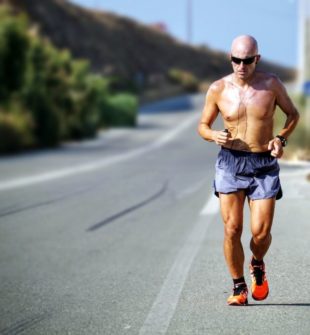Nils Van der Poel Training: Achieving Optimal Fitness

Introduction:
When it comes to achieving optimal fitness, Nils Van der Poel training is a renowned and highly effective approach. This article will provide a comprehensive overview of Nils Van der Poel training, including its types, popularity, quantitative measurements, differences between various training methods, and a historical analysis of the advantages and disadvantages associated with this approach.
An Overview of Nils Van der Poel Training

Nils Van der Poel training is a holistic fitness approach that focuses on achieving physical and mental wellness. It integrates various exercise techniques, nutritional guidance, and lifestyle changes to optimize overall health. The training emphasizes the development of strength, endurance, flexibility, agility, and balance.
Types of Nils Van der Poel Training
There are several types of Nils Van der Poel training programs, each catering to different fitness goals and preferences. Some popular types include:
1. Strength Training: This type of training focuses on building and toning muscles, improving overall body strength, and enhancing bone density.
2. Cardiovascular Training: This type of training aims to improve cardiovascular endurance through exercises such as running, cycling, or swimming.
3. Flexibility Training: This type of training emphasizes stretching exercises to enhance flexibility, range of motion, and muscle elasticity.
4. High-Intensity Interval Training (HIIT): HIIT involves alternating between intense bursts of exercise and short rest periods. It is known for its efficiency in burning calories and improving cardiovascular fitness.
5. Mind-Body Training: This type of training combines physical exercises with mind-body practices such as yoga or Pilates, promoting mental focus, relaxation, and stress reduction.
Quantitative Measurements in Nils Van der Poel Training
Nils Van der Poel training utilizes quantitative measurements to track progress and ensure optimal results. Some common quantitative measurements include:
1. Heart Rate Monitoring: By monitoring heart rate during exercise, individuals can determine the intensity of their workout and make necessary adjustments.
2. Body Composition Analysis: This analysis involves measuring body fat percentage, muscle mass, and overall body composition to assess physical progress accurately.
3. Strength Testing: These tests evaluate an individual’s strength and muscular endurance using exercises such as bench press, squats, or planks.
4. Fitness Assessments: Fitness assessments measure various components of fitness, including cardiovascular endurance, muscular strength, flexibility, and agility, providing an overall view of one’s fitness level.
Differences Between Various Nils Van der Poel Training Methods
While different Nils Van der Poel training methods share the goal of achieving optimal fitness, they may differ in terms of intensity, duration, exercise selection, and training principles. For example:
1. HIIT training is characterized by short, intense bursts of exercise, followed by brief recovery periods, making it suitable for individuals seeking time-efficient workouts.
2. Strength training typically involves lifting weights or using resistance equipment to build muscle and increase strength. The duration and intensity of strength training workouts may vary depending on individual goals and fitness levels.
3. Flexibility training primarily focuses on stretching exercises, ranging from static to dynamic stretches, improving joint mobility, and preventing injuries.
4. Mind-body training incorporates elements of mindfulness and relaxation, such as deep breathing and meditation, to promote stress reduction, mental clarity, and body awareness.
Historical Analysis of the Benefits and Drawbacks of Nils Van der Poel Training
Over time, Nils Van der Poel training has been associated with numerous benefits and drawbacks, which have shaped its evolution. Some historical advantages include:
1. Improved overall fitness and physical performance: Nils Van der Poel training has consistently proven effective in enhancing strength, endurance, flexibility, and agility.
2. Weight management: The incorporation of regular exercise and sound nutritional guidance in Nils Van der Poel training has helped individuals achieve and maintain a healthy weight.
3. Mental well-being: Nils Van der Poel training’s holistic approach addresses mental health, leading to reduced stress levels, improved mood, and enhanced overall well-being.
However, it is essential to mention some potential drawbacks:
1. Risk of overtraining: Intense exercise regimens, if not well-balanced and properly managed, can increase the risk of overtraining, leading to injuries, exhaustion, or burnout.
2. Lack of customization: Nils Van der Poel training programs may not provide individualized plans, which can hinder progress and increase the risk of injury for certain individuals.
3. Potential for unrealistic expectations: The emphasis on optimal fitness in Nils Van der Poel training can sometimes place undue pressure on individuals, leading to unhealthy behaviors or body image issues.
Conclusion:
Nils Van der Poel training offers a comprehensive and effective approach to achieving optimal fitness. By incorporating a diversified range of exercise techniques, proper nutrition, and lifestyle changes, individuals can improve their physical strength, endurance, flexibility, and mental well-being. However, it is crucial to understand the differences between various Nils Van der Poel training methods and to assess the advantages and disadvantages associated with this approach. By considering these factors, individuals can personalize their fitness journey and maintain a balanced and sustainable approach to wellness.





